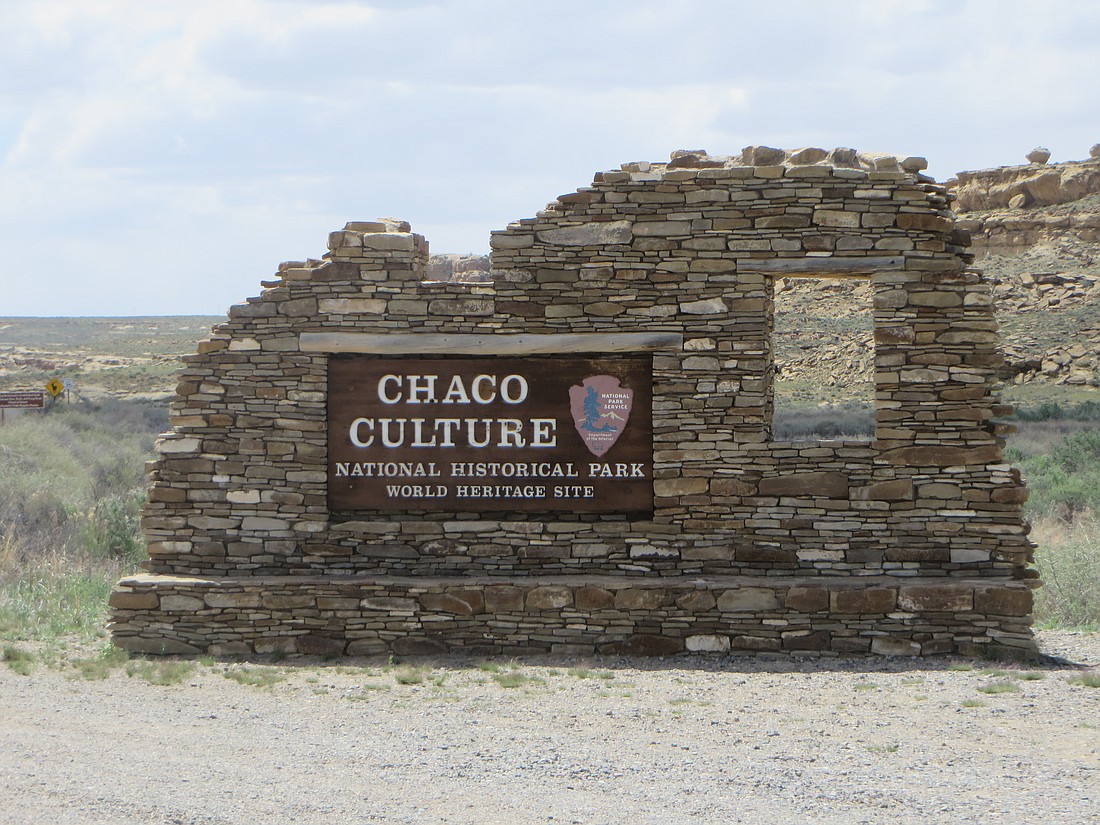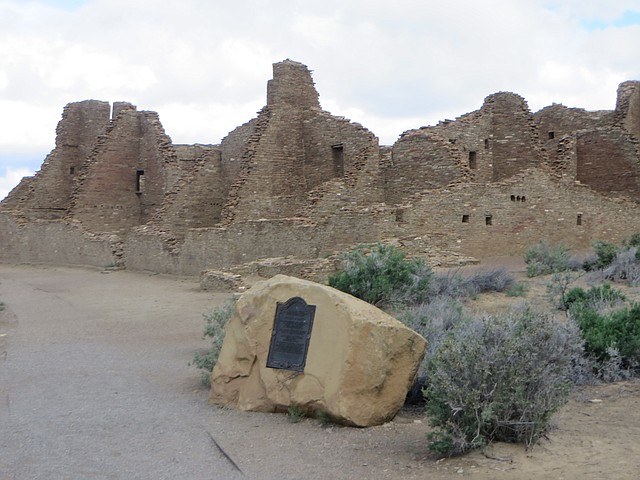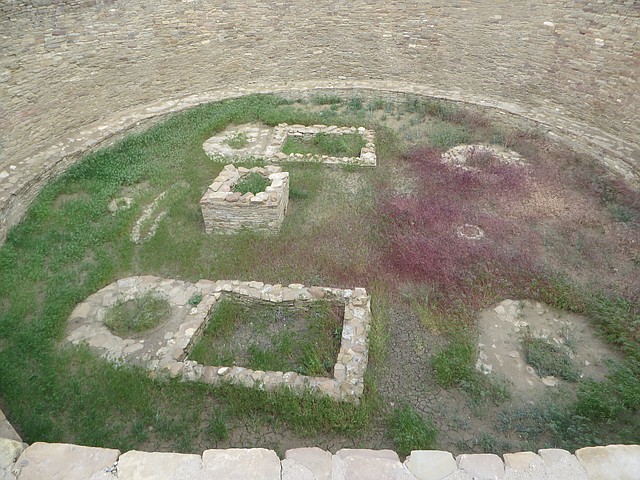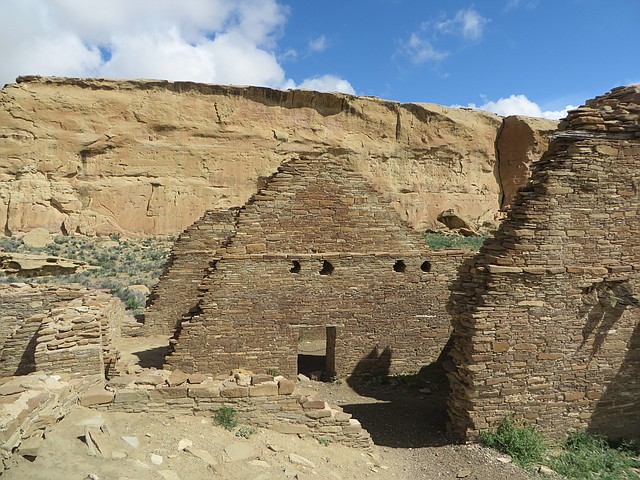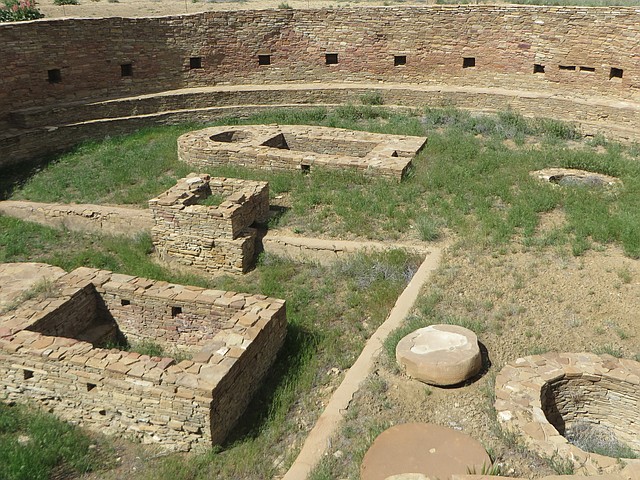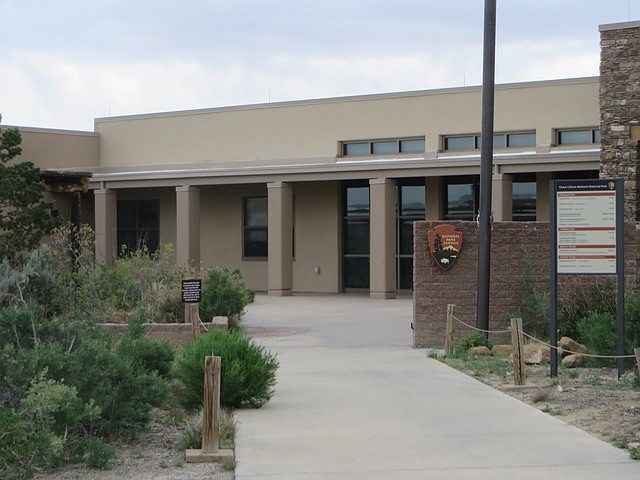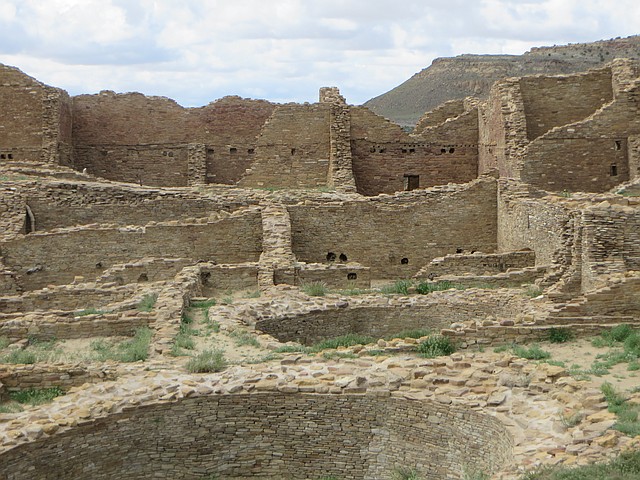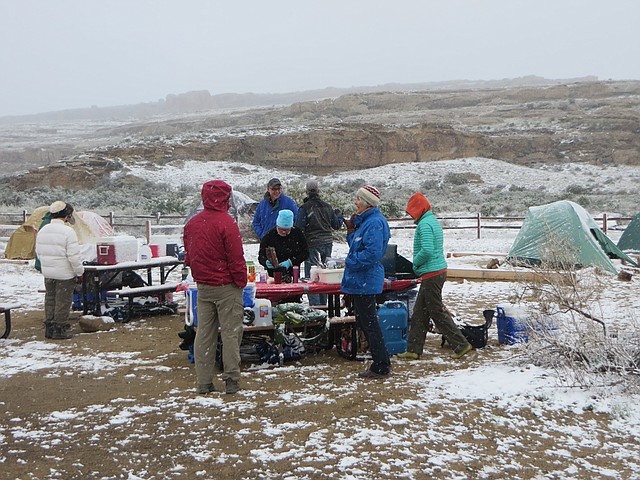History comes alive at Chaco Canyon
December 25, 2017 at 6:00 a.m.
You can almost hear the voices of the ancestral people as you stand amid the ruins at Chaco National Historical Park in Northern New Mexico. They seem to echo within the walls of this monumental architectural site that was once home to a vibrant center of Puebloan culture some 1,000 years ago. As you look around, it’s hard to believe that the high-desert landscape, harsh winters and short growing seasons were conducive to the creation of such an achievement. Yet, this valley became the hub of an advanced social organization and community life that thrived and flourished for centuries.
It all began in the mid-800s, when the Chacoan people started building massive stone buildings or Great Houses with hundreds of rooms. Early on, they used the dark brown sandstone from the nearby cliff tops; later, they preferred the light tan sandstone from the lower canyon walls. Construction of some of the buildings spanned decades or longer and although each is unique in its own way, they all share recognizable Chacoan architectural features: planned layouts, multistoried construction, distinctive masonry, spacious rooms, open plazas and huge subterranean ceremonial chambers called “great kivas.” The latter most likely served as gathering places for different communities in the region and could have accommodated multitudes of people at one time.
As you head into Chaco, you’ll notice that the road leading into the park is unpaved and rough. While you drive in the comfort of your vehicle consider that the Chacoans developed hundreds of miles of prehistoric roadway which they used to carry goods. This extensive system of trails also linked Chaco to outlying communities and resource areas. They were planned and engineered paths that required extensive labor to build and maintain. At the Great Houses, you’ll see numerous double and quadruple road segments leading to and from the structures. Archaeologists think these may have been related to various ceremonial rituals, as well as have been a reflection of the puebloan world view.
On a guided walking tour of the various Great Houses, visitors learn that the structures were typically oriented to solar, lunar and cardinal directions. Surrounding them were sophisticated astronomical markers, communication features, water control devices and formal earthen mounds. The setting for these structures was against a backdrop of sacred mountains, mesas and shrines that continue to have deep spiritual meaning for many Southwest Native American descendants today. For them, the place is still alive and speaks of ancestry, survival, spirituality and connections.
The most thoroughly investigated, visited and renowned cultural site in Chaco Canyon is Pueblo Bonito. It was the most important of the Great Houses and served as the center of the Chacoan world; a sphere that eventually covered much of present-day Southwest. Built in stages, the structure eventually towered four stories high with over 600 rooms and forty kivas. Most archaeologists now believe that Pueblo Bonito and the other Great Houses weren’t traditional farming villages as originally thought, but probably examples of impressive public architecture used for commerce, trade and ceremony on a seasonal basis by many different clans. At Pueblo Bonito, for example, there are rooms with platforms stretched out midway between the floor and ceiling, suggesting that these “shelves” could have been used as sleeping areas for Chaco’s visitors.
Walking among the ruins of Pueblo Bonito, Chetro Keti, Hungo Pavi and the other Great Houses in the park spurs the imagination. Questions abound regarding those who created these buildings and their motivation for establishing such an imposing presence at this specific locale. One also wonders about the full significance of this daring social experiment, and whether it was a shared vision by many or the brainchild of only a few high ranked individuals. It’s also unclear as to what prompted the change that came to Chaco in the 1100s and 1200s when its role as a regional powerhouse shifted. Particularly perplexing is why the people left this site and migrated to other areas, abandoning their architectural masterpieces and feats of engineering behind as testaments to their advanced level of civilization. Though we will never know the real truth, it’s fascinating to explore the issues. Everyone can get in on the game and have fun contemplating and brainstorming various possibilities with the confidence that there are no wrong answers.
There’s plenty of hiking at Chaco with trails of varying lengths, leading to several of the noted archaeological sites. Some, such as those to Tsin Kletsin and Wijiji require hiking permits which you can get at the visitor center. Make sure you stop at the center for an introduction to the park, as it offers a good background video on Chaco, a few exhibits and of course, knowledgeable park rangers ready and willing to provide assistance.
An easy walk for all ages is the quarter-mile Petroglyph Trail, which runs from Pueblo Bonito to nearby Chetro Keti, another Great House. The path follows the base of a cliff and at each of the numbered stops, you’ll see petroglyphs – images that have been carved into the soft sandstone surface by a sharp-edged object, and pictographs – images painted on rock surfaces. These images were probably intended mostly as visual communications. Some could be clan symbols; others might serve as records of important events or memory aids for recalling stories, songs and ceremonies. There are also inscriptions on the rocks that give information about early travelers to the area such as the Spaniards and later the U.S. Army. And then unfortunately there is modern day graffiti. Rather than ignoring this defacement, view it as a teachable moment if you’re traveling with your grandkids. Take the opportunity to talk about the effects that such vandalism has on Chaco Canyon’s early rock art and how it detracts from the older images.
There is no lodging, gas or food available at Chaco, and the nearest town is sixty miles away. Many folks opt to camp at the National Park Service’s Gallo Campground, a mile from the visitor center. There you’ll find tables, fireplaces and central toilets, with water available at the visitor center. Bring your own firewood and if you want shade, take along a portable shelter. Be prepared for all weather scenarios, especially if you’re tent camping. Snow in May is not altogether uncommon as our group discovered in the wee hours of Mother’s Day weekend. Though it made for a very chilly morning, the unseasonably wintry white stuff gave the scene a stark beauty.
For more information about Chaco National Historical Park: www.nps.gov/chcu
Debbie Stone is a travel writer and columnist, who explores the globe in search of unique destinations and experiences to share with her readers. She’s an avid adventurer who welcomes new opportunities to increase awareness and enthusiasm for travel and cross-cultural connections. Her stories appear in a number of print publications as well as on various travel-oriented websites, and she can also be heard on the radio dishing about travel with the hosts of Big Blend Radio. Debbie is a longtime Seattle area resident, who currently resides in Santa Fe, New Mexico.
